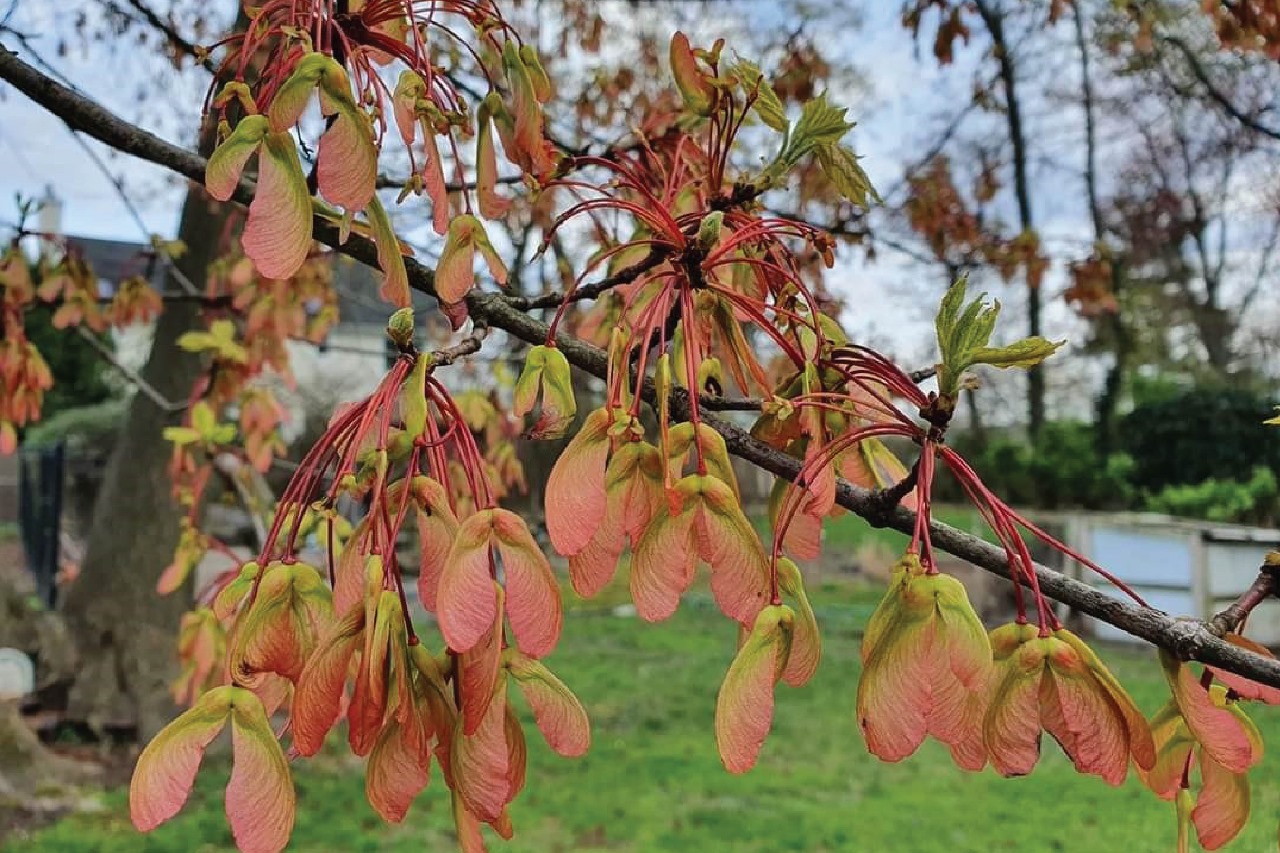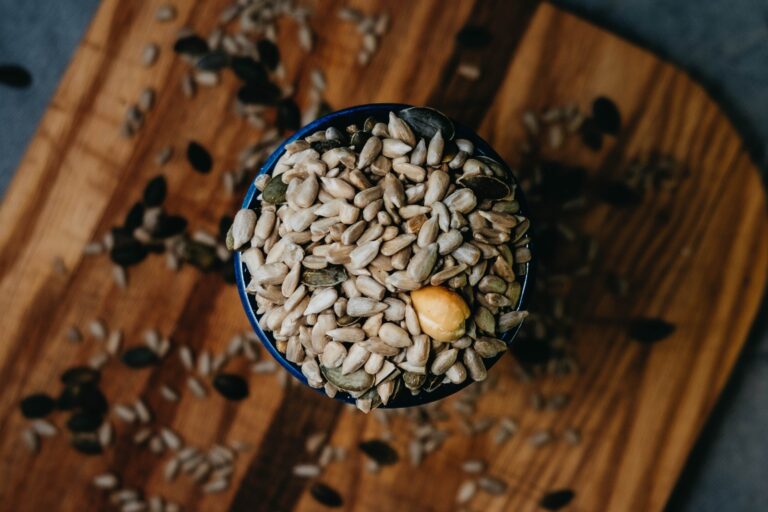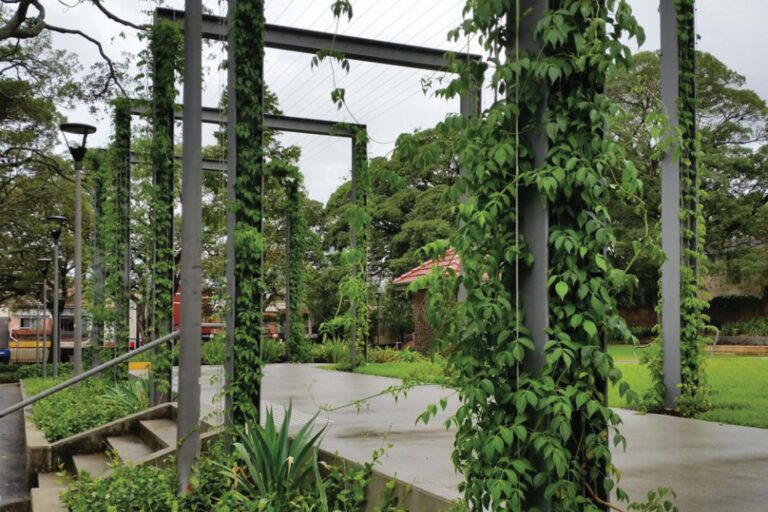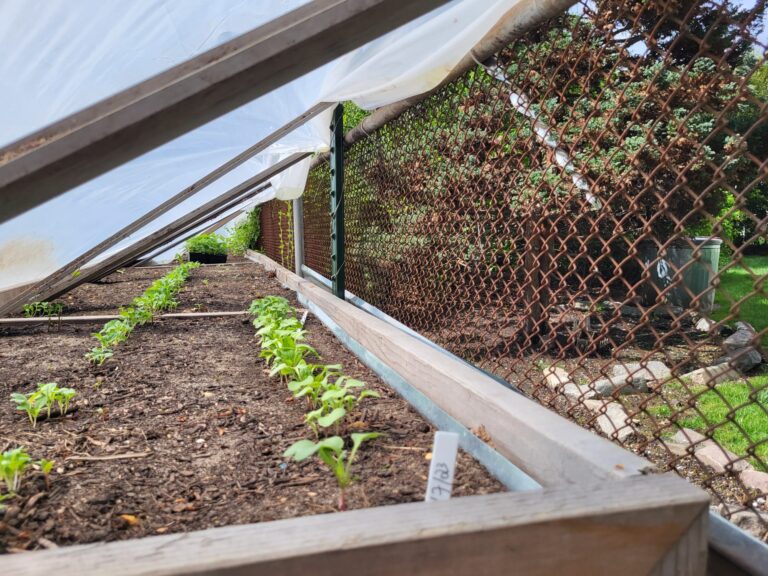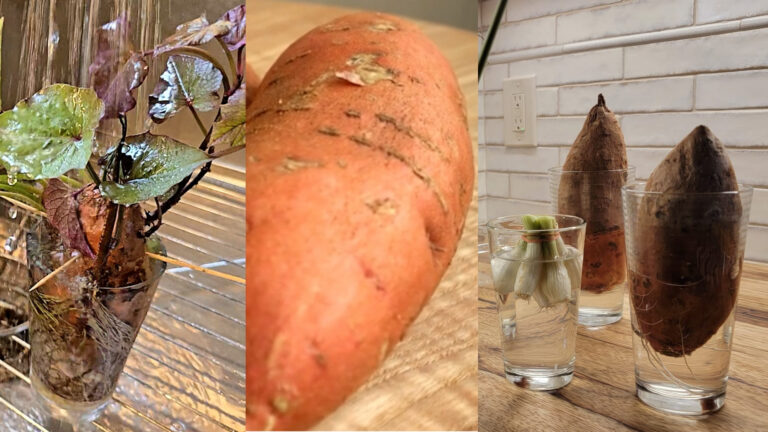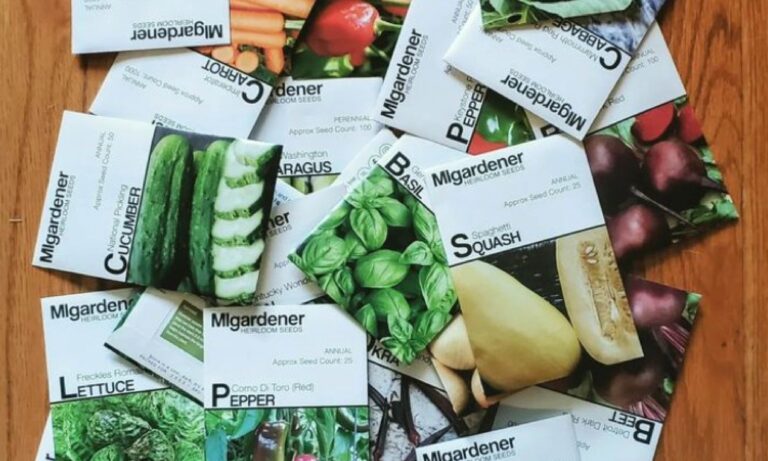Native Plants: 5 Major Roles of Native Plants in Ecosystem of Northeast US
Introduction
A rich diversity of native plants exists in the northeastern United States, encompassing states such as New York, New Jersey, Pennsylvania, and the New England states. These plants have evolved over millennia in response to the region’s climate, soil, and ecological interactions. Preserving and understanding these native species is critical for preserving biodiversity, supporting wildlife, and creating environmental equilibrium. In this blog, we will discuss the significance of native plants, highlight some essential species, and delve into their ecological roles, all supported by scientific evidence. There are more informative blogs have been shared in the gardening section.
The Importance of Native Plants
Native plants are those that grow naturally in the place where they evolved. They provide the basis of the local ecosystem, providing food and habitat for native species. Native plants provide the following benefits:
Biodiversity Support
Native plants provide habitat for a diverse range of local animals, including insects, birds, and mammals. The link between the monarch butterfly (Danaus plexippus) and milkweed (Asclepias spp.) is well-documented. Monarchs lay their eggs on milkweed plants, and the caterpillars eat only milkweed leaves.
Adaptation to Local Conditions
Native plants have adapted to the local climate and soil conditions, making them more resistant to adverse weather and requiring less water and upkeep than non-native species. This modification makes them perfect for eco-friendly gardening.
Ecosystem Services
These plants provide ecosystem services such as soil stabilization, water filtering, and carbon sequestration. Their deep root systems assist to minimize erosion and increase soil health.
Invasive Species Resistance
Planting native species helps to minimize the spread of invasive plants, which can outcompete and replace local flora, resulting in habitat and biodiversity loss.
Key Native Plant Species of the Northeast
Here, we cover some notable native plants from the Northeast, including their traits, ecological roles, and advantages.
Trees
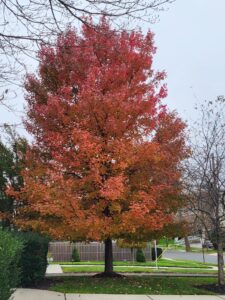
1. Sugar Maple (Acer Saccharum)
The sugar maple is a popular deciduous tree endemic to the northeastern United States, known for its bright fall colors and considerable ecological significance. Sugar maples perform an important ecological role in forest ecosystems, providing habitat and food for a wide range of species. Woodpeckers and other birds use the tree’s bark for foraging and breeding, while squirrels eat its seeds. Furthermore, sugar maple sap is the principal source of maple syrup production, which is an economically significant business.
Scientific studies have highlighted the sugar maple’s function in carbon sequestration. Kloeppel et al. (2003) found that sugar maples contribute significantly to carbon storage due to their huge biomass and extended lifespan, which aids in climate management. Furthermore, the tree’s large root system aids in soil stabilization by avoiding erosion and supporting soil health. This adaptability and ecological importance highlight the sugar maple’s role in preserving forest integrity and biodiversity.
2. Eastern White Pine (Pinus strobus)

The Eastern White Pine (Pinus strobus) is a massive evergreen tree native to the northeastern United States, reaching heights of more than 100 feet. This species is ecologically significant because it provides critical habitat and food for a variety of wildlife species. Bald eagles (Haliaeetus leucocephalus) frequently nest in their high branches, while mammals such as red squirrels (Tamiasciurus hudsonicus) eat the seeds.
Eastern white pines play an important role in forest succession and structure. According to Abrams (2001), these trees play a critical role in sustaining forest composition and biodiversity, particularly in mixed hardwood-conifer forests. The tree’s capacity to grow in a variety of soil types and circumstances makes it a vital species in many northern ecosystems. The thick roots of the Eastern White Pine also improve soil stability and reduce erosion, contributing to overall ecosystem resilience and health.
Shrubs
1. Highbush Blueberry (Vaccinium corymbosum)

The Highbush Blueberry (Vaccinium corymbosum) is a deciduous shrub native to the northeastern United States, known for its tasty blue berries and lovely white to pinkish blooms. This shrub is important ecologically because it provides food and habitat for a variety of wildlife species. Its berries are an important food source for birds and mammals, while its blossoms attract pollinators like bees and butterflies.
Scientific evidence demonstrates the value of highbush blueberries in pollinator health and biodiversity. Isaacs and Kirk (2010) discovered that these bushes provide essential nectar and pollen supplies, especially in the early summer when other food sources may be sparse. Furthermore, the dense thickets generated by highbush blueberries are good cover and nesting grounds for tiny animals. The plant’s resilience to a wide range of soil types and conditions adds to its ecological importance, making it an important species for habitat restoration and conservation efforts.
2. Northern Bayberry (Myrica pensylvanica)

Northern Bayberry (Myrica pensylvanica) is a hardy, semi-evergreen shrub endemic to the northeastern United States. It is known for its scented leaves and waxy berries. Northern Bayberry is an important ecological species in coastal and upland settings. Its berries provide a significant winter food supply for birds like the yellow-rumped warbler (Setophaga coronata).
Scientific investigations have highlighted its importance in erosion prevention and soil stabilization. Hesp (1991) found that Northern Bayberry’s large root systems successfully stabilize coastal dunes, limiting erosion and encouraging dune growth. Furthermore, the plant promotes habitat diversity by providing shelter for small mammals and nesting locations for birds. Northern Bayberry’s ability to fix nitrogen increases soil fertility, which benefits other plant species and contributes to overall ecosystem health. This shrub’s ability to withstand harsh coastal circumstances makes it a vital component of coastal ecosystem restoration and conservation efforts.
Herbaceous Plants
1. Purple Coneflower (Echinacea purpurea)
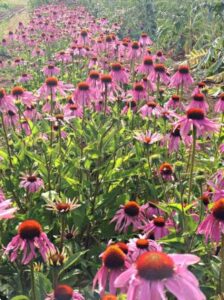
The Purple Coneflower (Echinacea purpurea) is a perennial herbaceous plant endemic to the eastern and central United States, distinguished by its vivid purple petals and conspicuous center cone. It has a profound ecological impact on pollinator populations. Its colorful flowers attract a range of pollinators, including bees, butterflies, and hummingbirds, which are necessary for the pollination of many plant species.
Scientific research backs up its relevance in preserving pollinator health and diversity. Harmon-Threatt and Kremen (2015) discovered that Echinacea purpurea produces an abundance of nectar and pollen, making it an important resource for pollinators throughout the growing season. In addition, its seeds provide food for birds in the fall and winter, helping to balance the food chain. The Purple Coneflower’s hardiness and tolerance to many soil types make it a great choice for habitat restoration and native landscaping, which improves ecosystem resilience and variety.
2. Wild Columbine (Aquilegia canadensis)

The Wild Columbine (Aquilegia canadensis) is a lovely perennial endemic to the northeastern United States, known for its striking red and yellow bell-shaped flowers. This early-blooming plant serves an important ecological role by giving nectar to pollinators like hummingbirds and bees, especially in the spring when there are few other nectar sources available.
Scientific research demonstrates its usefulness in pollinator assistance. Gegear and Burns (2007) found that Wild Columbine is critical for sustaining early-season pollinator populations, which then pollinate other plants, increasing total ecosystem biodiversity. Furthermore, the plant’s distinctive flower structure promotes cross-pollination, resulting in genetic diversity within plant communities.
Wild Columbine also serves as a larval host for several butterfly species, adding to its ecological value. Its flexibility to varied soil types and propensity for partial shade makes it an ideal addition to woodland gardens and restoration projects, where it feeds a diverse range of species while maintaining ecological balance.
Grasses
1. Little Bluestem (Schizachyrium scoparium)
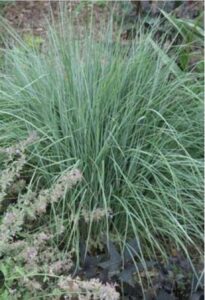
Little Bluestem (Schizachyrium scoparium) is a warm-season perennial grass that grows in the northeastern United States’ grasslands and open woodlands. This grass, known for its blue-green stems that turn a brilliant reddish-orange in the fall, is ecologically vital for its role in promoting biodiversity and ecosystem stability.
Scientific studies emphasize the relevance of Little Bluestem in grassland ecosystems. Howe (1994) revealed that this grass provides critical cover and nesting locations for birds and small mammals, hence increasing habitat complexity and wildlife diversity. Furthermore, its deep root system improves soil structure, increases water penetration, and reduces erosion, all of which are critical for sustaining soil health and stability in prairie ecosystems.
Little Bluestem also helps pollinator species by providing a home for insects like grasshoppers and butterflies. Its adaptability to changing soil conditions and climates makes it an ideal option for restoration operations aimed at protecting natural grasslands and increasing ecological resilience.
2. Switchgrass (Panicum virgatum)

Switchgrass (Panicum virgatum) is a tall, perennial grass native to the northeastern United States. It is known for its huge, fluffy flower plumes and adaptability to a variety of conditions. Switchgrass is an important ecological component that supports biodiversity and ecosystem services.
Scientific research demonstrates its importance in bioenergy and habitat restoration. McLaughlin and Kszos (2005) emphasized switchgrass’ potential as a biofuel crop, citing its high biomass output and minimal input needs, making it a sustainable alternative to fossil fuels. Furthermore, switchgrass provides habitat and food for wildlife. Its dense growth provides cover and nesting locations for birds and small mammals, and its seeds are a food source for many bird species.
Switchgrass’s broad root system improves soil structure, increases organic content, and reduces erosion. This grass also contributes to carbon sequestration, which helps to alleviate the effects of climate change by storing carbon in its biomass and roots.
The Role of Native Plants in Ecosystems
These plants are essential to the health and functioning of ecosystems. They perform vital functions that sustain other types of life and ecological systems. Here are a few significant roles:
1. Pollination
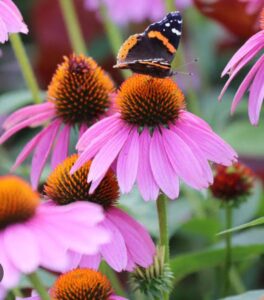
Pollination is the process of transferring pollen from a flower’s male half (anther) to the female part (stigma), allowing for fertilization and seed formation. Pollinators such as bees, butterflies, birds, and the wind play a critical role in this process. Pollination promotes plant genetic variety, food production, and ecosystem health by allowing plants to reproduce while also providing habitat and nutrients for other creatures.
2. Food Webs
Food webs reflect the complicated feeding interactions that exist within an ecosystem, as well as how energy and nutrients circulate between different creatures. Herbivores consume the energy that producers, like plants, convert from sunlight. These herbivores provide food for carnivores and omnivores. Decomposers degrade dead matter, returning nutrients to the soil and maintaining the cycle. Food webs illustrate the connectivity and reliance of species within an ecosystem, which maintains its balance and health.
3. Habitat Provision
Habitat provision refers to an ecosystem’s ability to provide appropriate living circumstances for a variety of species. It contains physical factors such as shelter, food supplies, and nesting locations that creatures require for survival and reproduction. Habitats span from forests and marshes to grasslands and coral reefs, each supporting a distinct set of species. Adequate habitat availability is critical for biodiversity conservation because it allows ecosystems to sustain different populations and promotes healthy ecological interactions.
4. Soil Health
Soil health refers to the entire ability of soil to support plant, animal, and human life. A healthy soil has appropriate nutrients, proper pH levels, good soil structure, and a robust community of microbes. It promotes plant growth, water filtering, and carbon storage. Soil health is critical for sustainable agriculture because it increases agricultural output while reducing environmental degradation. Crop rotation and organic farming are important conservation techniques for preserving and increasing soil health for future generations.
5. Water Regulation
Water regulation refers to the control and management of water resources within an environment. It includes mechanisms including water retention, filtration, and distribution, all of which are required to maintain life. Wetlands, woods, and riparian zones play important roles in water regulation by acting as natural flood barriers, filtering pollutants, and replenishing groundwater supplies. Healthy water regulation promotes ecosystem resilience, reduces the effects of extreme weather events, and assures the supply of clean water for both human and environmental purposes.
Conservation and Restoration Efforts
Conserving native plant species and restoring native habitats are crucial to preserving biodiversity and ecological health. Conservation and restoration activities use a variety of tactics and practices:
1. Habitat Restoration
Restoring degraded ecosystems by reintroducing indigenous plant species. For example, transplanting little bluestem in prairies helps to restore native grassland ecosystems.
2. Invasive Species Control
Managing and controlling invasive species that endanger indigenous plant communities. This frequently entails physical removal, chemical treatments, or biological control measures.
3. Conservation Planning
Creating and implementing conservation strategies that prioritize the preservation of native plant ecosystems. This includes designating protected areas and establishing wildlife corridors.
4. Community Involvement
Engaging local people in conservation initiatives through education and native garden planting. Community gardens and urban green spaces with native species can boost local biodiversity.
5. Research and Monitoring
Researching the ecological roles of native plants and tracking population fluctuations throughout time. This data helps to shape conservation strategies and adaptive management.
Challenges and Future Directions
Despite the obvious benefits of native plants, a number of problems prevent their protection and broad use. This includes:
1. Habitat Loss
Urbanization, agriculture, and development continue to fragment and devastate natural environments.
2. Climate Change
Climate change can influence the distribution and viability of native plants.
3. Lack of Awareness
The public’s understanding of the importance of native plants is frequently restricted, resulting in a preference for non-native decorative species.
4. Invasive Species
Non-native invasive plants outcompete native species, altering local ecosystems.
Addressing these challenges requires a multifaceted approach
1. Policy and Legislation
Implementing policies to safeguard native ecosystems and encourage the use of native species in landscaping and construction projects.
2. Education and Outreach
Raising awareness of the benefits of native flora through educational programs and outreach efforts.
3. Research and Innovation
Supporting native plant research and the development of novel conservation and restoration solutions.
4. Collaboration
promoting cooperation between governmental bodies, environmental groups, academic institutions, and nearby communities in order to accomplish conservation objectives.
Conclusion
By using plants, we can support the resilience and health of our ecosystems while preserving the integrity of our natural landscapes. We can ensure that future generations can continue to benefit from the numerous ecological services that native plants provide by reducing the dangers posed by habitat loss, invasive species, and climate change through conservation and restoration activities. In order to create more biodiverse and sustainable landscapes, where native plants flourish and support the complex web of life that supports all living things, we must first cultivate a deeper respect and management of our native flora.
Let’s celebrate the value and beauty of native plants and work to protect them in the future for the sake of the world and all of its people.

